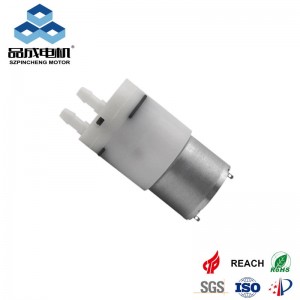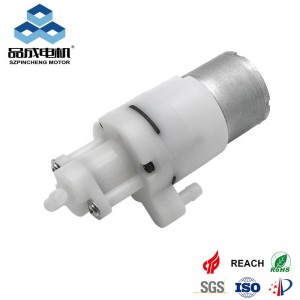Micro water pumps supplier
Diaphragm pumps, known for their versatility and robustness, are workhorses in countless industries, from manufacturing and chemical processing to wastewater treatment and food & beverage. A common and critical question for anyone relying on this equipment is: What is the life expectancy of a diaphragm pump?
The short answer is that there's no single number. Unlike consumer products with a fixed lifespan, a diaphragm pump's longevity is not measured in years but in operational hours. A well-maintained pump from a quality manufacturer can typically last between 15,000 to 30,000 hours of operation, and in some optimal conditions, even longer.
However, achieving this upper range depends on a confluence of factors. By understanding these variables, you can significantly extend the service life of your pump and maximize your return on investment.
Key Factors Influencing Diaphragm Pump Lifespan
The durability of your pump is directly tied to how it's used and maintained. Here are the primary determinants:
-
Pump Quality and Materials of Construction: This is the most critical starting point. The quality of components like the diaphragm, valves, ball seats, and housing dictates inherent durability. For instance, pumps from reputable manufacturers like Pinmotor are engineered with high-grade materials such as PTFE (Teflon), Santoprene, Viton, or EPDM for the diaphragm and seals. These materials offer superior chemical compatibility and wear resistance, directly translating to a longer lifespan. As highlighted on the Pinmotor diaphragm pump page, their focus on precision manufacturing ensures consistent performance and reliability.
-
The Nature of the Pumped Fluid: What you are pumping is paramount.
-
Abrasive Fluids: Slurries or fluids containing solid particles will cause accelerated wear on the diaphragm, valves, and ball seats, reducing life expectancy.
-
Chemical Compatibility: Pumping a fluid that is incompatible with the diaphragm or seal material will lead to rapid degradation, swelling, or cracking. Always consult a chemical compatibility chart before selection.
-
Temperature: Extremely hot or cold fluids can affect the elasticity of the diaphragm and other components, leading to premature failure.
-
-
Operational Conditions:
-
Cycle Speed: Diaphragm pumps are designed for a specific strokes-per-minute (SPM) range. Consistently running a pump at its maximum rated speed will generate more heat and wear, shortening its life. Operating at a lower, more efficient speed can dramatically extend it.
-
Dry Running: Modern air-operated double diaphragm (AODD) pumps can run dry without immediate catastrophic failure, but prolonged dry running increases heat and friction, leading to unnecessary wear.
-
Air Supply Quality: For AODD pumps, clean and dry compressed air is essential. Dirty or moist air can cause issues with the air valve and increase internal corrosion.
-
-
Maintenance Practices: Proactive maintenance is the single biggest factor under your control. A neglected pump will fail early, while a well-maintained one can far exceed its expected life.
-
Regular Inspection: Periodically check for signs of wear on the diaphragm, valves, and seals.
-
Preventative Replacement: Don't wait for a part to fail completely. Replacing wear parts like diaphragms and balls in a scheduled maintenance shutdown prevents unexpected downtime and collateral damage to other pump components.
-
Signs Your Diaphragm Pump Needs Attention
Watch for these indicators that your pump is nearing the end of a component's life:
-
Reduced Flow Rate or Pressure: Often a sign of worn valves or a fatigued diaphragm.
-
Irregular Pulsation: The smooth flow becomes jerky.
-
Visible Leakage: Fluid leaking from the pump is a clear sign of diaphragm or seal failure.
-
Unusual Noises: Knocking, clicking, or changing rhythms can indicate issues with the air valve or internal components.
How to Maximize Your Pump's Life Expectancy
-
Select the Right Pump for the Application: Don't oversize or undersize. Choose a pump with materials specifically compatible with your fluid. Manufacturers like Pinmotor offer a range of configurations to meet precise needs.
-
Operate Under Optimal Conditions: Run the pump at the slowest speed that meets your flow requirements. Ensure your air supply is clean.
-
Implement a Proactive Maintenance Schedule: Follow the manufacturer's maintenance guidelines. Keep a stock of common wear parts (diaphragm kits, valve assemblies) to minimize downtime during servicing.
Conclusion
While a typical industrial diaphragm pump offers a life expectancy of 15,000 to 30,000 hours, this figure is a guideline, not a guarantee. The true lifespan is a direct result of initial pump quality, application suitability, and, most importantly, diligent maintenance.
Investing in a high-quality pump from a trusted supplier like Pinmotor provides a solid foundation for long-term, reliable operation. By understanding the factors that influence wear and committing to a proactive care regimen, you can ensure your diaphragm pump delivers maximum value and longevity for years to come.
For more detailed specifications and to explore robust diaphragm pump solutions designed for durability, visit Pinmotor's product page.
you like also all
Post time: Sep-18-2025




